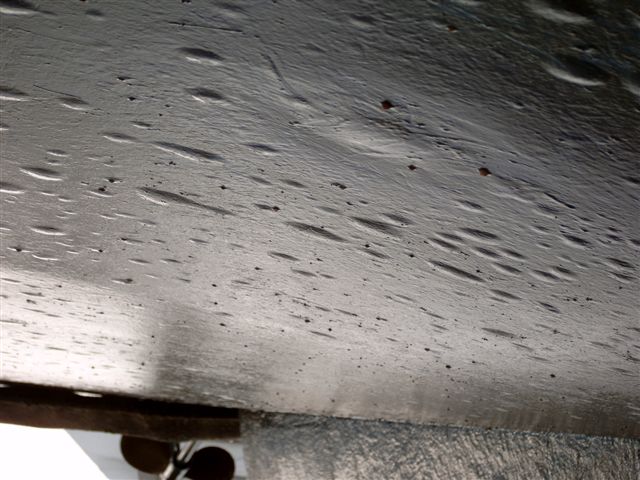WHEN TO DO OSMOSIS TREATMENT TO YOUR BOAT?

When we hear about osmosis, the world falls on us. Therefore, in today’s article, and with the help of V de Bravado, boathouse in Premia de Mar and for us the best boathouse in Catalonia, we are going to talk about what osmosis is in a boat, and when and what treatment should give to end it.
It is actually a simple phenomenon of natural decomposition of the resin due to the absorption of water that causes the helmet to gradually lose its homogeneity and, over time, can cause it to lose its mechanical properties. Luckily, today it is easy to identify and solve on time. Let’s see what our friends from V de Bravado have told us.

What is osmosis in a boat
In the mid-1960s, the use of polyester resins reinforced with fiberglass or GRP in the manufacture of sport and recreational boat hulls began to become popular. Unlike steel and other metals or wood, polyester is an anticorrosive plastic material. But over time it was discovered that it is also exposed to deterioration, that it can also lose its aesthetic properties due to its exposure to the weather and that, due to being submerged in water, it can suffer from osmosis.
It was observed that polyester helmets absorb water in proportions that range between 3 and 4% of their initial weight and that when the percentage is greater than 1.5%, abundant blisters filled with a liquid appear below the gelcoat layer acid. This process of resin decomposition due to water absorption is what we call osmosis.
Going into more detail, osmosis occurs due to the filtration of water through gelcoat and resin, which have a different absorption capacity. In GRP boats the outer layer of the gelcoat has the function of protecting the laminate from external agents, but this sometimes acts as a semipermeable membrane that allows the passage of water into the laminate. As the water penetrates the hull, it reacts with some of the components of the laminate.
This creates small areas where there is a high concentration of chemical substances higher than any other outer concentration of the hull, such as seawater. This forces each cell to exert a great osmotic force, which causes more water to penetrate outside the hull, in an attempt to reduce the concentration of chemical substances. All this causes the pressure inside the helmet to rise, as more water enters than it can contain in the absence of expansion. The resin and the fiberglass and mat fabrics gradually lose their homogeneity and the mechanical properties of the helmet are seriously altered.
However, to reach these extremes many years are necessary, but it is important to control the humidity of the helmet to avoid the appearance of this phenomenon.
Now that we know what osmosis is on a ship, let’s determine its treatment.

Osmosis treatment
To prevent osmosis from appearing and spreading, moisture must be prevented from entering the laminate using resins and gelcoats with high waterproofing capacity, such as isophthalic and epoxy polyester resins.
On the other hand, for a cure and prevention treatment, the first step is to sandblast the live work in two phases:
- In the first one, the entire antifouling will be removed until the gelcoat is exposed and then a water wash of the entire dripping area will be carried out.
- Once dry, we will proceed to the second phase, which consists in removing the entire gelcoat layer and the stratified areas that are in poor condition.
After the blasting, periodic washing with pressurized water must be carried out to dissolve all the chemicals generated by the osmotic phenomenon. An exhaustive control of the humidity and temperature levels inside and outside the hull will also have to be carried out to optimize and accelerate the general drying.
In addition, it is important that, periodically, the relative humidity contained in the helmet be checked until the optimum values to start the treatment are reached. It is not easy to give an exact deadline to ensure the drying of a helmet, because it depends on the degree of humidity reached, the climate of the area and many other variable factors. Once the hull is dry, two layers of primer with a high epoxy resin content and high thickness will be applied. Once this process is done, a specific epoxy primer will be applied to ensure a perfect grip of the antifouling so that the boat stays in good condition for several years.
We hope these tips have been useful to you. If you want to know more about these processes or need to know the price of the treatment for a ship’s osmosis, do not hesitate to contact V de Bravado, your boathouse in Catalonia.

This post is also available in:
 Español
Español
